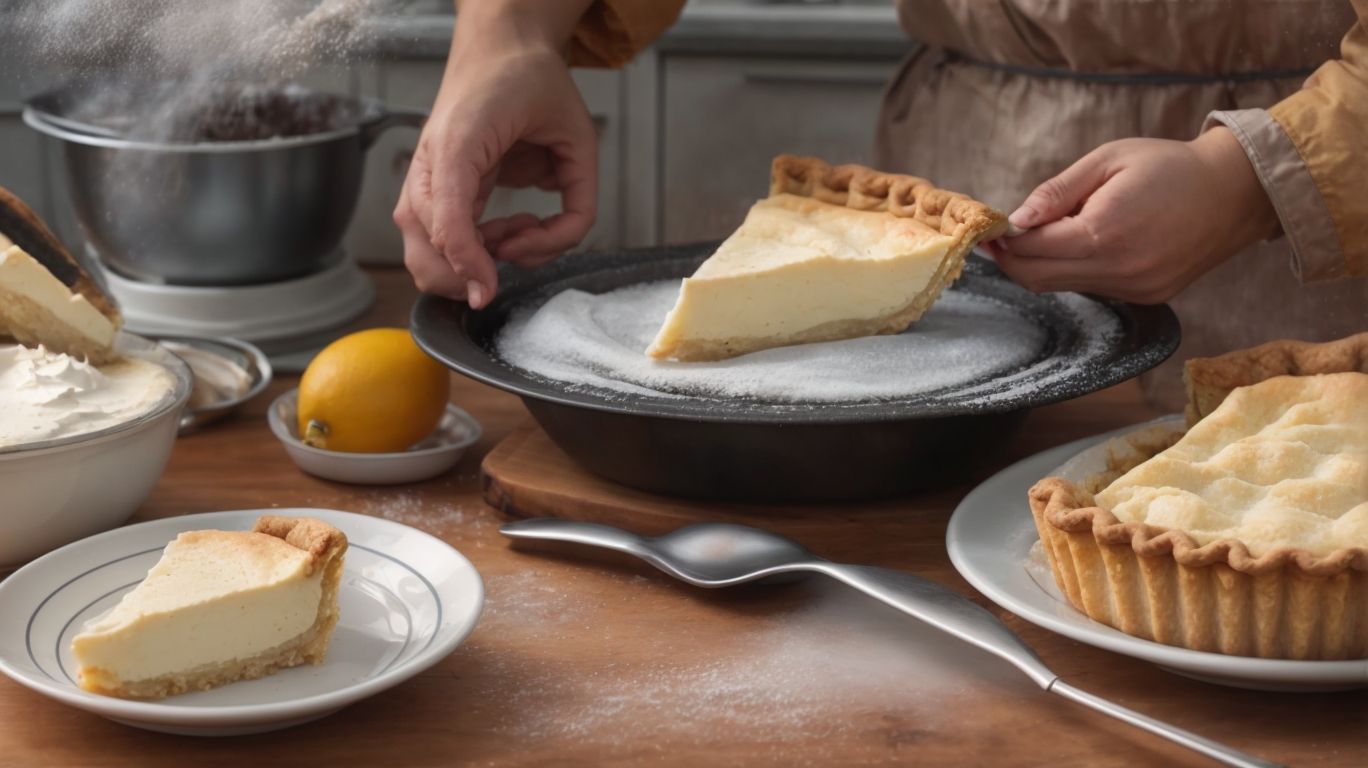How to Bake a Pie From Frozen?
In today’s fast-paced world, convenience is key when it comes to cooking and baking. That’s why baking a pie from frozen can be a game-changer.
Not only does it offer convenience, but it also extends the shelf life of your favorite pies and can even result in a better texture.
This article will explore the types of pies that can be baked from frozen, how to prepare a frozen pie for baking, tips for perfectly baked frozen pies, and provide you with a delicious recipe to try at home.
Let’s get started on mastering the art of baking a pie from frozen!
Key Takeaways:
Why Bake a Pie from Frozen?
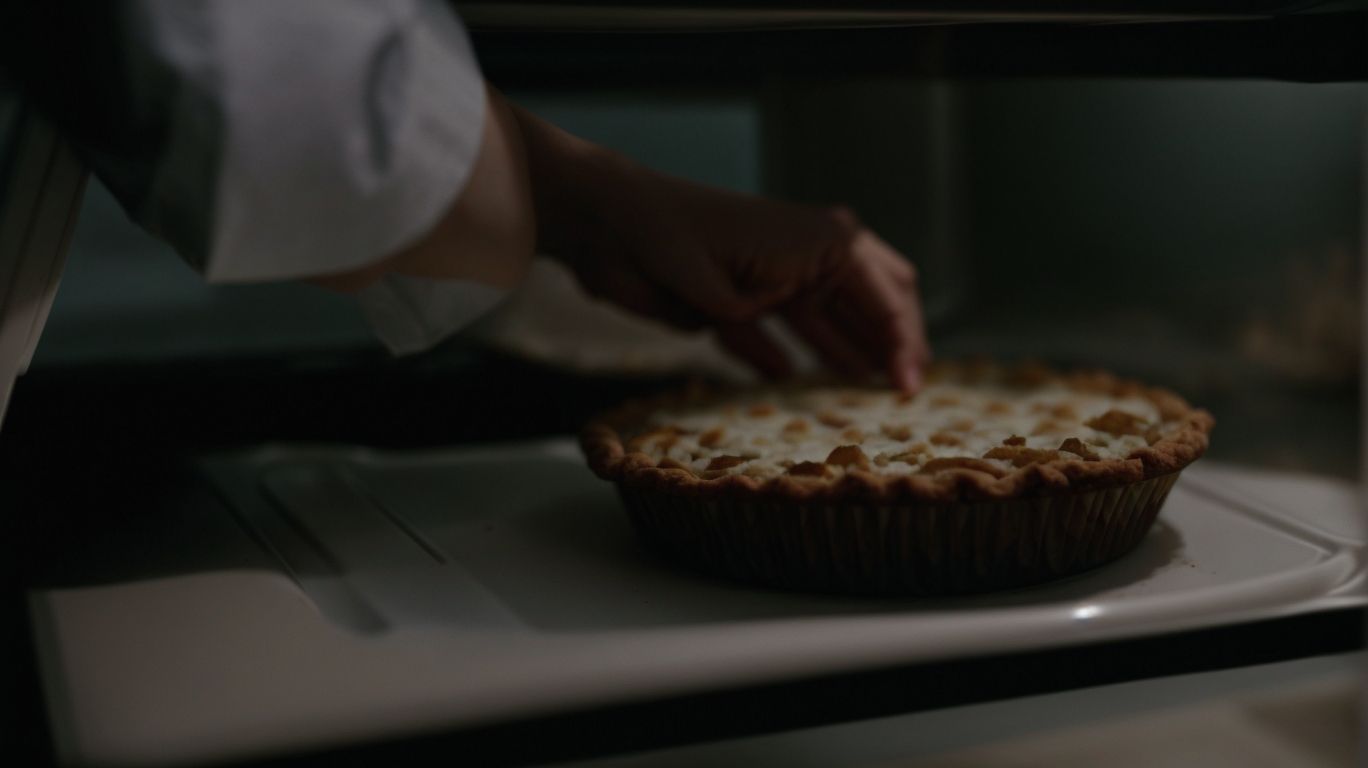
Credits: Poormet.Com – Kyle Hernandez
Baking a pie from frozen offers numerous advantages, including convenience, extended shelf life, and enhanced texture.
When you’re running short on time but still want to treat yourself to a delicious homemade pie, having a frozen pie ready to bake can be a real lifesaver. You can skip the lengthy prep process and go straight to enjoying the aroma of a freshly baked pie in your kitchen. Freezing a pie helps lock in its flavors and moisture, ensuring that each slice tastes as if it was just made. As the pie slowly bakes from frozen, the crust develops a delightful flakiness that perfectly complements the warm, gooey filling.
Convenience
One of the key reasons to bake a pie from frozen is the convenience it offers in busy schedules or when unexpected guests arrive.
When you have a freezer stocked with frozen pies, you can easily pull one out whenever the craving strikes without the need to go through the entire process of making a pie from scratch. The time-saving aspect is truly valuable, especially on those hectic days where time seems to slip away.
Preparing a frozen pie is incredibly simple as well. Just follow the instructions on the packaging, pop it in the oven, and you’re good to go. Baking from frozen also offers flexibility – you don’t have to worry about defrosting or planning ahead, making it a go-to option for a quick and delicious dessert solution.
Longer Shelf Life
Frozen pies have a longer shelf life compared to fresh ones, especially when using high-quality fruit fillings that maintain their flavor even at room temperature.
When fruit fillings are carefully prepared and frozen at the peak of their freshness, they lock in the natural sweetness and aroma, ensuring a delightful burst of flavors with each bite.
The extended shelf life of frozen pies not only provides convenience for busy households but also allows for better portion control as you can thaw and enjoy a slice whenever a sweet craving strikes.
Better Texture
Baking a pie from frozen often results in a better texture, with the double crust and bottom pastry getting ample time to develop a golden brown color and achieve the desired flakiness.
When using a double crust, the layers have the chance to meld together, creating a symphony of flavors and textures that perfectly complement the filling inside. Placing the pie on a sheet pan not only helps distribute the heat evenly but also catches any potential spills, keeping your oven clean and the bottom crust crisp. Keep a keen eye out for visual cues such as the crust turning a beautiful shade of golden brown, indicating that it’s perfectly baked and ready to be devoured.
Types of Pies That Can Be Baked from Frozen
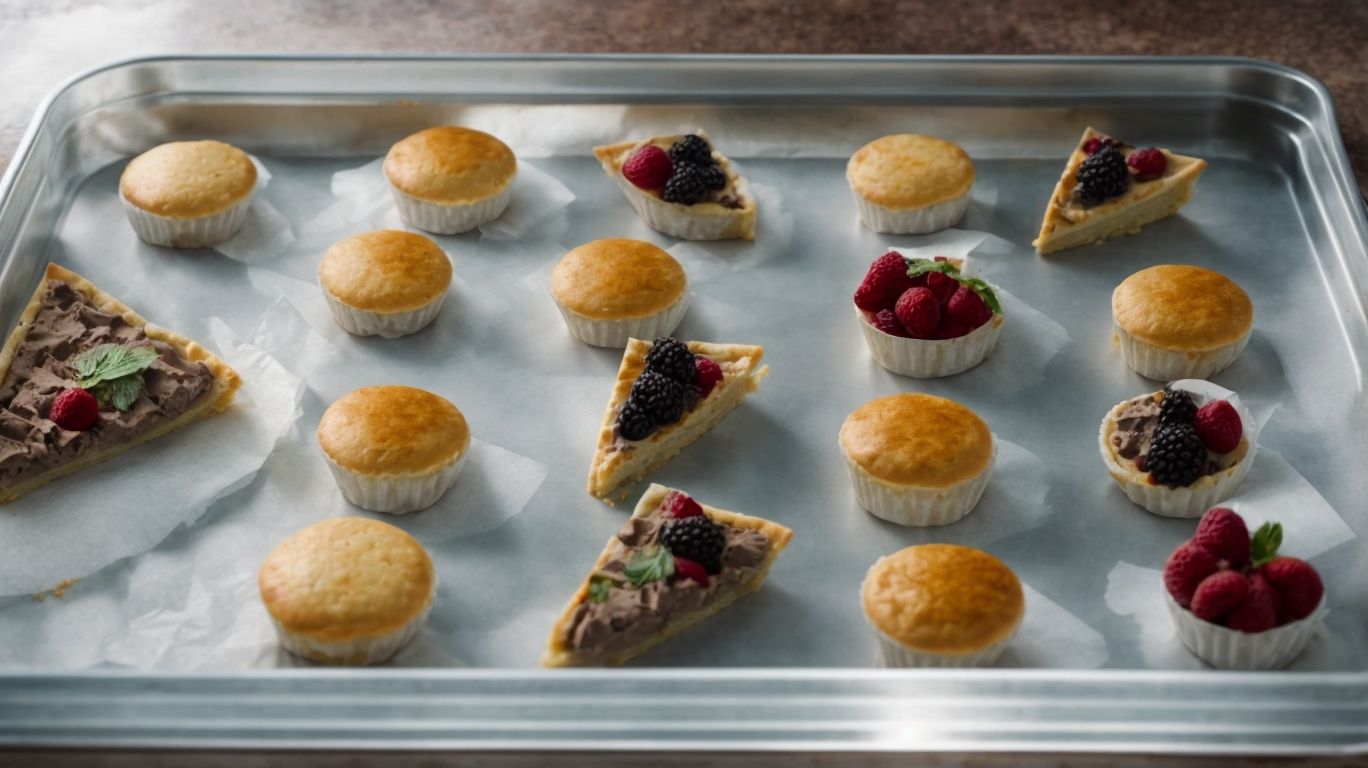
Credits: Poormet.Com – George Brown
Various types of pies can be successfully baked from frozen, including classic fruit pies like Sweet Cherry Pie or innovative options like Ginger Strawberry Rhubarb Pie.
In terms of frozen pies, the convenience factor cannot be overstated. A quick and easy solution for those sudden cravings, frozen pies allow you to enjoy a freshly baked treat without all the prep work. Fruit pies, in particular, retain their flavor and texture exceptionally well when baked from frozen, reminding you of the delicious homemade taste with every bite.
One delightful option that stands out is the Ginger Strawberry Rhubarb Pie, an intriguing blend of sweet and tangy flavors that is sure to impress your taste buds. This unique combination is a perfect example of how exploring different ingredients can lead to extraordinary culinary experiences.
Fruit Pies
Fruit pies are a delicious option for baking from frozen, with the sweet and tangy fruit fillings caramelizing beautifully in the oven at the recommended temperature.
The appeal of baking fruit pies from frozen lies in the way their flavors intensify during the baking process. Fruits like apple or cherry become softer and their natural sugars concentrate, creating a luscious filling that complements the flaky crust perfectly. To ensure a perfect result, it’s crucial to preheat the oven at the specified temperature, allowing the pie to bake evenly and achieve that coveted golden-brown crust. This attention to detail in oven temperature plays a vital role in the overall success of your fruit pie baking adventure.
Cream Pies
Cream pies are another delightful choice for baking from frozen, ensuring a luscious and creamy texture when properly prepared and baked while fully frozen.
One of the key attributes of cream pies that makes them ideal for baking from frozen is the rich and indulgent filling that maintains its velvety consistency even after being frozen. This characteristic allows the pie to hold its shape well during the baking process, resulting in a perfectly set filling with a smooth and creamy consistency.
In terms of baking cream pies from frozen, ensuring that the pie remains fully frozen before going into the oven is crucial. This step helps the filling retain its creamy texture and prevents it from becoming watery or overbaked. By baking the pie while fully frozen, you can achieve a beautifully set filling that is rich, creamy, and utterly delicious.
Savory Pies
Savory pies offer a savory and satisfying option for baking from frozen, with a total time that includes preparation, baking, and serving as per the detailed instructions.
In terms of preparing savory pies, the process can be a delightful culinary adventure. From selecting the right ingredients to carefully layering the fillings and enclosing them in a buttery crust, each step contributes to the overall flavor profile.
Once assembled, savory pies can be conveniently stored in the freezer for later enjoyment. As they bake from frozen, the aromas wafting from the oven enhance the anticipation of a delicious meal. The secret to achieving that perfect golden crust and rich, flavorful filling lies in following the detailed instructions provided, ensuring a mouthwatering outcome every time.
How to Prepare a Frozen Pie for Baking

Credits: Poormet.Com – Joseph Allen
Properly preparing a frozen pie for baking involves steps like preheating the oven, covering the edges with aluminum foil, and sprinkling sugar for a golden finish.
Before starting the preheating process, ensure there is ample space in your oven for the pie without overcrowding, allowing proper air circulation for even baking. To preheat the oven, adjust the temperature as per the pie’s instructions, typically around 375°F to 400°F for most frozen pies. While the oven is heating up, shape strips of aluminum foil around the pie’s edges to prevent them from burning during baking.
For an extra touch, lightly sprinkle sugar on the top crust of the pie before placing it in the oven. The sugar will not only add a sweet crunch but also enhance the attractive appearance of the finished pie, creating a tempting golden sheen that will surely impress your guests.
Thawing the Pie
Thawing the pie to reach room temperature before baking is crucial for ensuring an evenly baked crust and following any specific notes provided for optimal results.
The process of thawing the pie is not just a simple step but plays a significant role in the final outcome of your baked goods. Thawing the pie gradually at room temperature allows the filling and crust to come to the same consistency, resulting in a perfectly baked pie. Ignoring this step could lead to an unevenly baked crust, leaving you with a less-than-ideal texture and taste. Checking for specific thawing instructions on the packaging or recipe is key to achieving the best results, as different pies may require different thawing methods depending on the crust type or fillings used.
Preheating the Oven
Preheating the oven to the recommended temperature, placing the pie on the middle-lower rack, and baking until golden brown are essential steps for achieving a perfectly baked frozen pie.
When preheating your oven accurately, it sets the stage for even cooking, allowing the pie to bake evenly from the start. Placing the pie on the middle-lower rack helps promote consistent heat distribution, ensuring that the bottom crust is not undercooked or overly crispy. Keep a close eye on the color change as the pie bakes to achieve that desired golden brown finish, indicating the perfect balance of flavors and textures in your frozen pie.
Preparing the Crust
Preparing the crust involves ensuring the bottom pastry is well-formed, watching for physical cues during baking, and using aluminum foil to prevent over-browning until achieving a golden brown color.
Before beginning the crust preparation, it is essential to choose the right recipe that suits the type of pie you are making. Once you have your dough ready, gently roll it out on a floured surface to the desired thickness. Placing the dough into the pie dish, make sure to press it firmly against the edges to avoid any air pockets. For a fruit-filled pie, consider sprinkling a thin layer of flour or breadcrumbs on the bottom to absorb excess juices and prevent sogginess. When covering the edges with aluminum foil, create a loose tent to shield them from excessive heat while allowing the center to bake evenly.
Baking the Frozen Pie
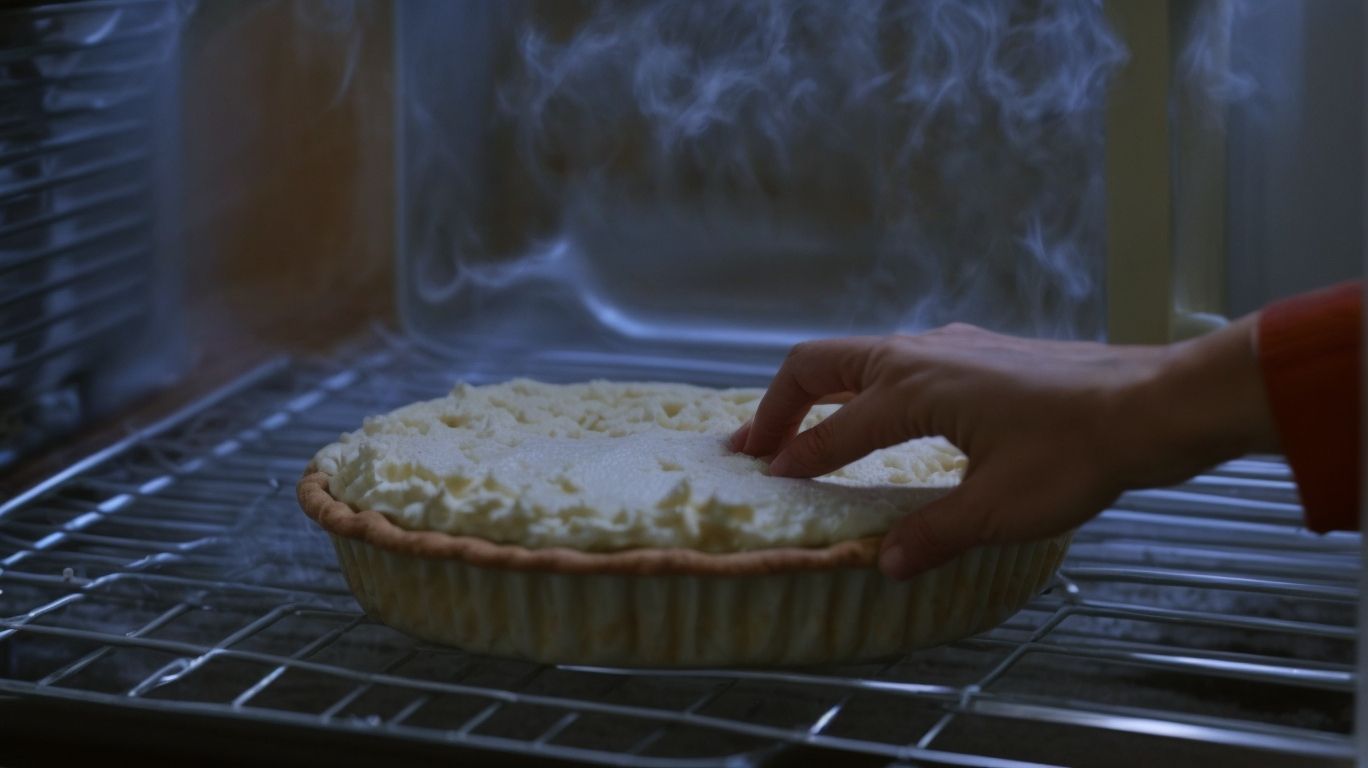
Credits: Poormet.Com – Daniel Anderson
Baking a frozen pie requires attention to checking for doneness, using a sheet pan for stability, and ensuring the filling is heated through to the desired temperature.
One key technique in determining if your frozen pie is thoroughly baked is to insert a thermometer into the center of the pie. It should register at least 165°F (74°C) for safe consumption. Placing the pie on a sheet pan not only helps in maintaining stability but also prevents any spillage in case the filling overflows during baking. Adequately heating the filling is crucial to ensure that the flavors meld and the pie reaches the perfect consistency. A golden-brown crust and bubbling filling are clear indicators that your pie is ready to be enjoyed!
Adjusting Baking Time and Temperature
Adapting the baking time and temperature based on the oven settings, type of filling, and the level of freezing ensures a perfectly baked frozen pie with a balanced texture and flavors.
Adjusting the baking parameters allows the pie to thaw and cook evenly, preventing undercooking or overcooking certain areas of the pie. Temperature control plays a crucial role in achieving the desired consistency of the crust and filling. For instance, fruit-filled pies may require a slightly lower temperature than savory meat pies to avoid burning the crust. Considering the initial freezing level of the pie is essential, as pies frozen solid will need more time in the oven compared to partially frozen ones. It’s advisable to consult the manufacturer’s instructions or recipes for specific guidance on baking times and temperatures.
Factors like the size and thickness of the pie, your oven’s accuracy, and personal preferences also influence the adjustments needed. By fine-tuning these variables, you can ensure that your frozen pie turns out golden-brown, with a bubbling, well-cooked filling, creating a delightful treat for your taste buds.
Adding Extra Ingredients
Enhancing the frozen pie with additional ingredients before baking, ensuring they complement the flavors and textures, and adjusting the total baking time accordingly results in a customized and delectable treat.
One creative option to uplift the frozen pie is adding a handful of fresh berries or sliced fruits, like raspberries or peaches, to infuse a burst of natural sweetness and a juicy contrast to the flaky crust.
- Experimentation with herbs such as thyme or rosemary can bring a savory depth that complements savory pies and adds an aromatic twist to the final dish.
- Consider including a sprinkle of nuts, such as toasted almonds or pecans, for added crunch and a nutty undertone, providing a delightful textural contrast to the pie filling.
Checking for Doneness
Determining the doneness of a frozen pie involves looking for a golden brown crust, bubbling filling, and following any specific notes provided for the baking process.
When checking the crust color, a properly baked pie will exhibit a rich golden hue, indicating that the pastry has been sufficiently cooked through. This golden color not only enhances the visual appeal but also ensures a crunchy texture.
Observing bubbling in the filling is a crucial step in determining doneness. A perfectly baked pie will showcase gentle bubbling action in the center, signifying that the filling has reached the desired temperature, and all ingredients have melded harmoniously.
Following any special instructions, whether it be covering the edges with foil to prevent over-browning or adjusting baking times based on your oven’s performance, is essential to achieve a flawlessly baked outcome.
Tips for Perfectly Baked Frozen Pies
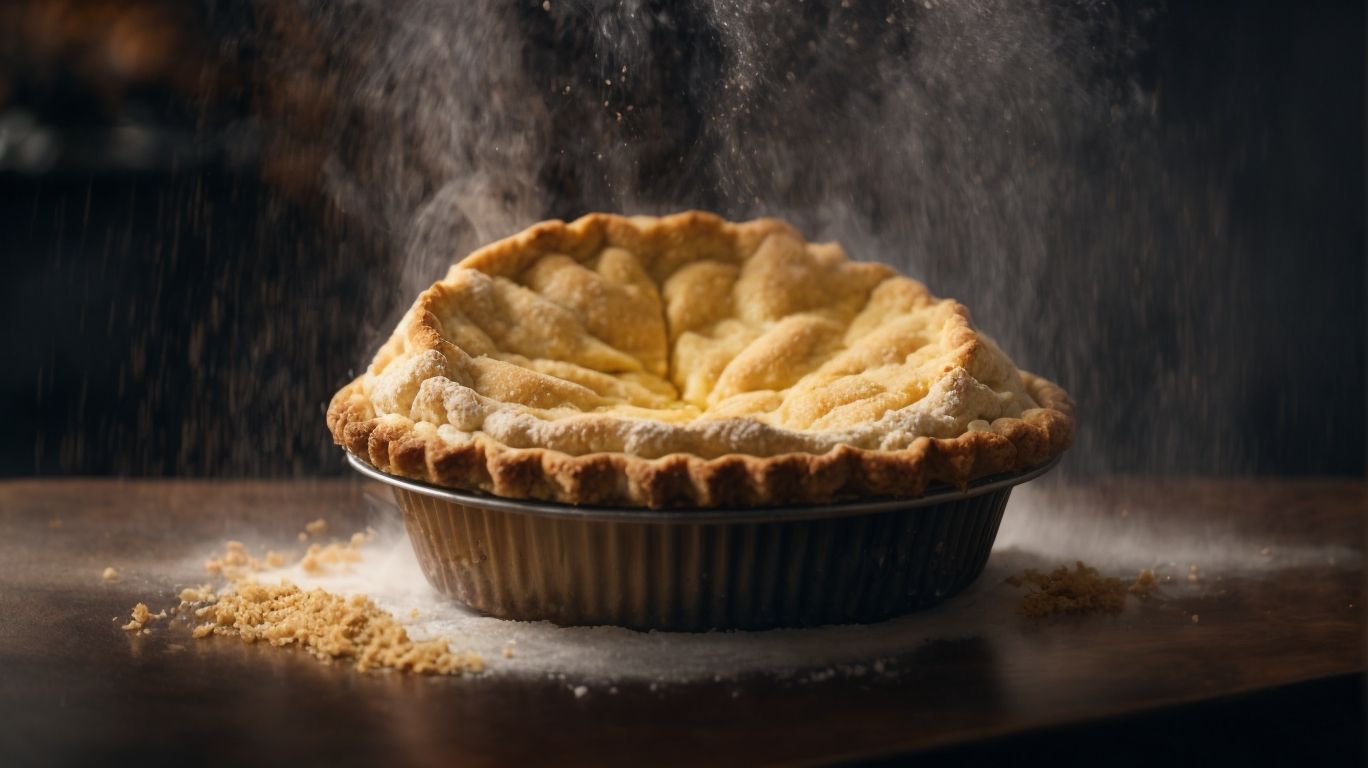
Credits: Poormet.Com – Peter Smith
Achieving perfectly baked frozen pies involves covering the edges with foil, using a pie shield for even baking, and brushing the crust with an egg wash for a shiny, golden finish.
In terms of edge protection with foil, make sure to gently crimp the foil around the pie’s edges to shield them from excessive browning while the filling cooks through. This simple step prevents burnt edges and ensures a uniform bake.
A pie shield is also a handy tool that fits over the crust to provide consistent heat distribution, allowing the pie to bake evenly without any parts getting too dark.
For that professional bakery appearance, applying an egg wash – a simple mixture of beaten eggs and water – before baking gives the crust a glossy sheen, elevating the overall presentation of the pie.
Covering the Edges with Foil
Shielding the edges of the frozen pie with aluminum foil ensures the bottom pastry retains its texture, and using physical cues or an instant-read thermometer helps to verify the crust’s readiness.
Aluminum foil serves as a protective barrier against excessive heat, preventing the edges from burning while allowing the center to properly bake. By gently wrapping the foil around the edges, you create a shield that controls the heat distribution, ensuring a perfectly golden crust.
Keeping an eye on the color and texture of the exposed crust can give you visual clues about the doneness of the bottom pastry. For those who prefer a precise method, an instant-read thermometer can be inserted into the center of the pie to confirm its internal temperature, aiding in achieving that ideal flaky crust.
Remember, mastering the art of foil usage and crust monitoring can lead to consistently delicious pies that impress every time!
Using a Pie Shield
Applying a butter pie crust, brushing with egg wash, creating a lattice pie crust, or blind baking the pie shield enhance the appearance and taste of frozen pies for a delightful culinary experience.
Butter pie crusts offer a rich, flavorful base that complements a variety of fillings, adding a buttery tenderness to each bite. When delicately brushed with egg wash, the crust achieves a beautiful golden sheen, presenting a luscious homemade appeal. Incorporating intricate lattice designs not only increases the visual appeal but also allows for steam to escape during baking, preventing a soggy bottom.
Blind baking the crust before adding the filling ensures a crisp, flaky texture, especially crucial for custard-based pies, maintaining the integrity of the crust while preventing it from turning soggy.
Brushing with Egg Wash
Applying an egg wash by hand to the top of the frozen pie before baking enhances its color and texture, making it a visual delight and a popular choice in baking tutorials and cooking categories.
In terms of creating that perfect golden-brown crust, the technique of applying an egg wash by hand is key. This process involves gently brushing a mixture of beaten eggs or egg yolk onto the surface of the pie before it goes into the oven.
The egg wash not only gives the pie a beautiful shine once baked but also helps to seal in moisture, preventing the crust from becoming dry. This simple yet effective method is frequently featured in various online baking and cooking tutorials due to its transformative impact on the final product.
Conclusion
Baking a frozen pie elevates the culinary experience with its methodical approach, carefully selected ingredients, and precise timing to ensure the pie is perfectly baked while fully frozen within the total estimated time.
By following a methodical baking process for frozen pies, you not only ensure the flavors are locked in but also help in achieving that ideal golden crust. Using quality ingredients, such as fresh fruits or premium chocolates, can significantly enhance the overall taste and texture of the pie.
Managing the baking time effectively is crucial to prevent undercooking or burning. It is imperative to follow the recommended baking time and monitor the pie throughout the process to make necessary adjustments and ensure a delicious outcome.
Recipe for Frozen Pie
Preparing a frozen pie involves following step-by-step instructions, unwrapping it carefully, bringing it to room temperature for even baking, preheating the oven, and adding a sprinkle of sugar for a delectable finish.
Once the pie is fully unwrapped, place it on a baking sheet lined with parchment paper to prevent any spillage inside the oven. Allow the pie to sit at room temperature for about 30-60 minutes, ensuring that it thaws evenly. This step is crucial to ensure that the pie bakes uniformly and results in a perfect texture.
While the pie is adjusting to room temperature, preheat the oven to the recommended temperature as per the pie’s packaging instructions. Preheating ensures that the pie cooks at the right temperature from the start, leading to a golden crust and a delicious filling.
Frequently Asked Questions
1. Can I bake a pie straight from the freezer?
Yes, you can bake a pie straight from the freezer. However, there are a few things you need to keep in mind to ensure your pie turns out perfectly.
2. How long should I bake a frozen pie?
The baking time will depend on the type of pie you are making and its size. Generally, you will need to add an additional 15-20 minutes to the baking time for a frozen pie.
3. Do I need to thaw a frozen pie before baking it?
No, you do not need to thaw a frozen pie before baking it. In fact, it is best to bake it straight from the freezer to prevent the crust from getting soggy.
4. Can I use a glass pie dish to bake a frozen pie?
Yes, you can use a glass pie dish to bake a frozen pie. Just make sure to let it cool down before placing it in a hot oven to prevent it from cracking.
5. How do I prevent the edges of my frozen pie crust from burning?
To prevent the edges of your frozen pie crust from burning, you can cover them with aluminum foil or a pie crust shield. This will help them to cook evenly without getting too brown.
6. Can I freeze a pie after it has been baked?
Yes, you can freeze a pie after it has been baked. Just make sure to let it cool completely before wrapping it tightly in plastic wrap and placing it in the freezer. When you are ready to eat it, let it thaw in the refrigerator before reheating in the oven.

